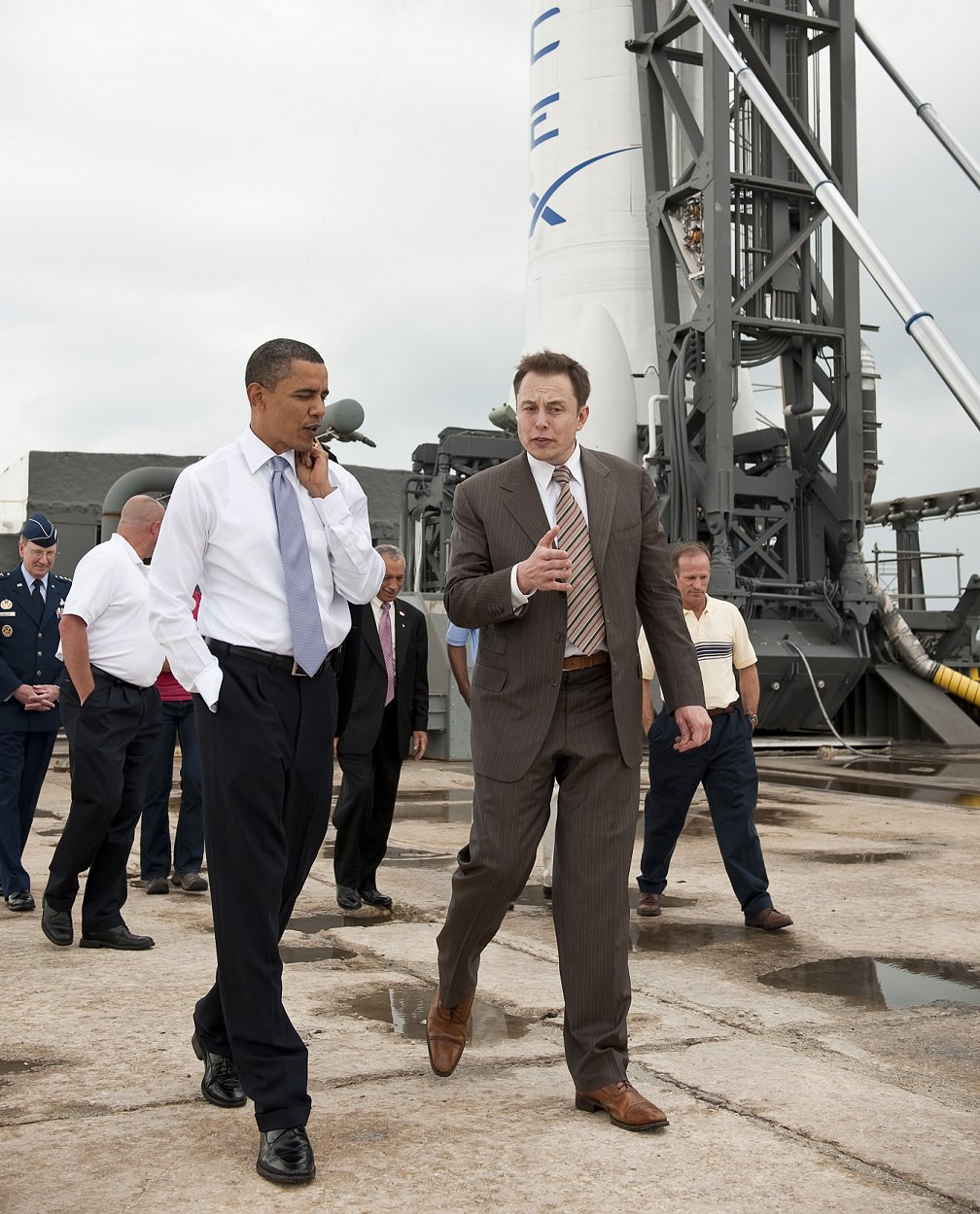SpaceX CEO Elon Musk is a huge fan of Mars exploration and Mars colonies, and in a new interview he says a launch system to send people to the Red Planet could be available in 10 to 12 years. Requirements: it has to be big, and it has to be launched frequently to send millions of people and tons of cargo spaceward.
“We need to develop a much larger vehicle, which would be a sort of Mars colonial transport system, and this would be, we’re talking about rockets on a bigger scale than has ever been done before. It will make the Apollo moon rocket look small,” said Musk in a recent CBS interview, referring to the 363-foot (110-meter) behemoth that was the Saturn V.
In the short term, Musk said he is focused on making a crew transportation system that will reduce NASA’s reliance on Soyuz vehicles to bring astronauts into space (a situation that arose in 2011 after the agency retired the shuttle.) SpaceX is one of three companies funded by NASA to develop a spacecraft able to launch people (with the other two being Boeing and Sierra Nevada.)
Musk said SpaceX’s Dragon should be ready to do that in a couple of years. Meanwhile, there are abort tests to perform and other steps this year to get the spacecraft ready for that milestone.
Check out the entire Musk interview on the CBS website. Naturally, he doesn’t have the only vision for human Mars exploration out there, as private ventures Mars One and Inspiration Mars demonstrate.



“…..10 or 12 years”! Go for gold Elon, just don’t get caught up on the Moon diversion thing.
The Falcon Heavy IS pretty big.. at least it is certainly going in that direction. Presently that design is basically 3 Falcon rocket assemblies. All assumed to eventually be return enabled with a Grasshopper style vertical landing? But now imagine FOUR liquid fueled boosters surrounding the core @ 1.3 million lbs of thrust each plus the core is FIVE X 1.3 m = 6.5 m tons of thrust! The Saturn 5 produced 7.5 m tons. Now, if instead of FIVE Falons.. say there were SIX Falcons with five surrounding the core… So… 6.5 + 1.3 = 7.8 million tons of thrust possible?
Falcon 9 nd ots Merlin 1D engines won’t be the basis of their Mars rockets.
The new Raptor methane staged combustion engine will be 4x as powerful, and with 9 Raptors per core in a tri-core Heavy could push nearly 300 tonnes to LEO.
Raptor components are supposed to start testing at NASA Stennis in the next few months.
thank you for providing this information i was hoping someone had done thorough research. In my opinion this is the only thing allowed in the public sphere. if technology were to rapidly advance at a exponential rate, which it already is when viewed objectively and subjectively, then it is theoretically possible to see manned missions to mars, scouting missions perhaps to map the planet and develop sustainable living on another planet.
Falcon 9 and its Merlin 1D engines won’t be the basis of their Mars rockets. The new Raptor methane staged combustion engine will be 4x as powerful, and with 9 Raptors per core in a tri-core Heavy could push nearly 300 tonnes to LEO. Raptor components start testing at NASA Stennis early this year.
The first step for getting to Mars is to simply get there. Forget grand expeditions with materials to build villages or cities. Forget even the NASA pipe dreams of sending 4 men, with a surface habitat and a rover. Just send one man — the smallest framed healthy guy you can recruit — in what’s essentially a jail cell, get there, plant a flag a come back debilitated but alive. You don’t plan on building a 5-star resort on top of Mount Everest before anyone has even climbed the mountain!
If you do the “minimalist” one man mission. You need to put about 105 tons in LEO. In that, there’ll be room for a space habitat about the size of a Dragon, an 8 ton, unpressurized Mars lander and ascend vehicle with one seat and enough backpack oxygen for 2~3 hours on the surface, a mercury sized earth re-entry capsule and about 2.5 tons of food and water. About 80 tons of the entire stack will be fuel and a single (low thrust) N2O4 engine like the AJ10-118. The first man on Mars will eat what is essentially one kind of rendered “paste” and drink recycled water for every meal. He’ll use aerobraking over 6 months to slow to LMO. He’ll pick a calm day to land for 2 hours and get back up then spend another 6 months in Mars orbit waiting for planetary alignment and the Earth return burn. His quality of life will absolutely suck. But, hey, the quality of life of early maritime explorers are absolutely deplorable by today’s expectations too. But it’s doable and he’ll make history. And if he is unwilling to suffer he doesn’t deserve to make history.
You can do a mission like that with two Falcon Heavy launches, no new technology, no break through propulsion, no need for shelter on Mars, no need to grow anything en-route and no need to make rocket fuel on Mars. But, you’ll have to leave in 2018 as Earth-Mars alignment that year allows for the lowest energy outbound and return trips.
Let’s just do it already instead of dreaming pipe dreams or build that SLS monstrosity without a mission.
wait, why so much tonnage? 108 tons seems a high number? doesnt it only take a month to two months to complete a one way trip to mars??? and to think, one day we might be FARMING for fuel on the Red Planet.